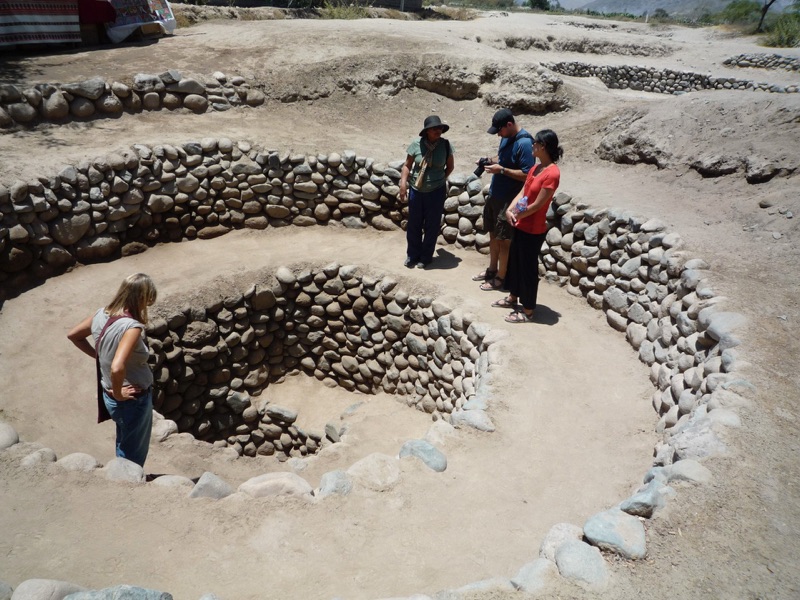NascoBLOG 7

Visiting a typical puquio at Cantalloc (Nasca) with Dr.Ana Maria Cogorno (centre) (c) William James Veall
Hello Everyone, Welcome to NascoBLOG7. I guess we can now settle down to the run into Autumn. Autumn, I hear you say - what already?
Yes, how the year has flown by and what great progress we at Nascodex have made in the last six to eight months, both in our current research programmes and publication of "Portraits of the Gods" supported by NascoBLOGS 1-6.
The sudden and almost unexpected link between "Portraits" and one of the World's last great mysteries, "The Long Lost Island of Atlantis", is certainly one of the great highlights of the year so far.
To find the 'Lost Lands of the Phoenician Canaanites' in Peru was a tremendously exciting achievement and a canny piece of detective work, but, to discover that we were actually sitting atop the 'Island of Atlantis' was, to say the least, unbelieveable!
In this next series of NascoBLOGS I am going to describe some of my past research which overlaps and supports much of the work that eventually led to uncovering not just a Phoenician, but a multi-cultural society living permanently in Peru 3000 years ago.
Obviously, with the space limitations of a Blog I cannot write complete chapter and verse on each individual 'discovery' so I will keep the text short and sweet and add some illustrations and photographs. Plus, you will get up to date News Items as they happen.
Phoenician Inscription on the Nasca Lines
The first positive evidence found that a footfall from an Old World Civilisation had stepped into the New World was my discovery of a massive 300 metre long Inscription 'written' in 3rd - 4th century B.C. PHOENICIAN; this to much excitement, was actually translated by a specialist Epigrapher, Dr Clyde Winters, who still posts the inscription on his web-site to this very day.
Here is the highlighted version of the actual inscription discovered in August 2002 and the subsequent translation. For a full explanation you can either look-up the article in "Portraits of the Gods", or log on click here .
As this dateable artifact is set neatly on a trapezoid within the Nasca Lines, it is one of the major clues we have giving a positive date for the construction of the Nasca Lines. Although, admittedly, the 'message' could have been placed along a vacant trapezoid sometime between 400 - 300 B.C. with the trapezoid itself being elaborated much earlier, say, 6th - 5th century B.C. At least, that is preferable to the 10,000 B.C. date extolled by some cranks who call themselves historians!
Still on the same subject, what do you think of the magnificent image of the ‘Architect of the Nasca Lines' depicted in "Portraits of the Gods"? This is the very first realistic 'photograph' taken of any actual human being that may have worked on the construction of the geoglyphs. Please drop me an e-mail and let me have your opinion. Thank you.
Please make a note that our next NascoBlog is the 9th October 2013 when I will discuss why I believe the Nasca Lines were constructed by means of astronomical phenomena - when many leading authorities still refuse to accept the fact.
William James Veall